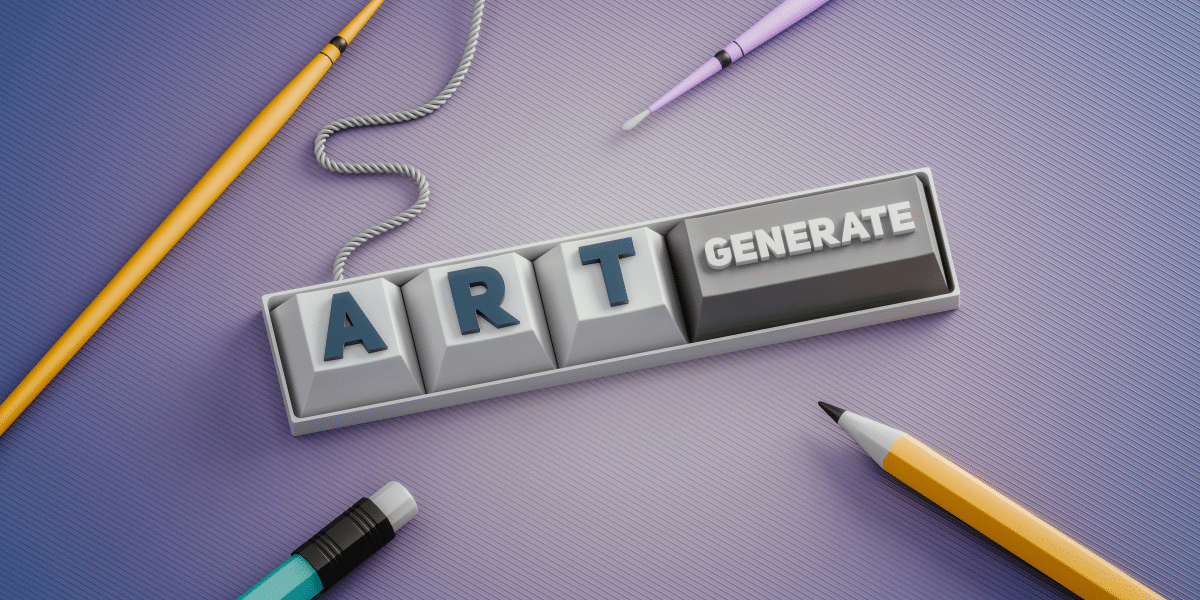In today’s digital world, AI is revolutionizing how products are designed, visualized, and presented. AI art generators are a powerful new tool that can transform product visualization. They are quicker, more creative, and cheaper. AI image generators help product designers, marketers, and entrepreneurs.
They quickly turn ideas into visuals that resonate with audiences. This article explores how AI image generators are changing product design. It covers their benefits and tips for using them effectively.
Understanding AI Image Generators in Product Design
AI image generators use advanced machine learning. They turn text or input images into realistic visuals. These tools analyze vast image datasets. They find patterns, styles, and textures. Then, they create new, lifelike images. This technology has a significant impact on product design, where visual quality, speed, and customization are key.
For instance, AI Image Generator lets users create images by entering text prompts. Imagine a product designer needing an image of a sleek, minimalist chair for a furniture line. The designer can use a text prompt to describe the chair’s features, color, and materials. The AI will then create a high-quality image based on that. This saves hours of sketching. This process reduces time spent on initial drafts and opens up possibilities for experimentation.
Benefits of Using AI Image Generators for Product Visualization
AI image generators are valuable in product design for various reasons. Here are some key advantages:
1. Accelerated Design Process: With AI, designers can create product visuals in minutes. This efficiency allows for quick tests of multiple designs. It requires little effort and time. A product design cycle that might take weeks can now be shortened to days.
2. Cost Savings Traditional product visualization has steps. It starts with concept sketches. Then, it moves to digital renderings and sometimes 3D models. These stages can be costly, especially if outsourcing is required. AI image generators are cheaper. They create detailed images with less manual work.
3. AI image generators let designers freely experiment with styles, colors, and textures. Suppose a client wants to see a product in various themes—like modern, vintage, or futuristic—AI can quickly generate images for each one. This gives them more creative control and flexibility.
4. Realistic Visual Quality One of the biggest selling points of AI art tools like Imagine AI is the quality of the visuals. The images are sharp, detailed, and, in many cases, can look just like real photos. This realistic quality is vital for designers of online ads and product visuals. High-quality images capture customer attention.
5. Rapid Prototyping and Testing AI image generators are perfect for prototyping. Designers can visualize multiple product versions before production. This reduces the cost of manufacturing errors. They can also test visuals, like color schemes or finishes. Then, they can gather client or consumer feedback early in the process.
How to Use AI Image Generators for Product Visualization: A Step-by-Step Guide
Using an AI image generator like Imagine AI is simple and doesn’t require an art background. Here’s a step-by-step guide to getting started:
Step 1: Define Your Product Concept
Start by outlining your product concept. Consider factors like the product’s primary function, target audience, and aesthetic style. For example, if designing a smartphone case for young adults, choose colors, patterns, and materials that would appeal to them.
Step 2: Create a Detailed Text Prompt
The more specific your text prompt, the better the results. Describe your product as precisely as possible. Imagine you’re creating a coffee maker visual:
- Example Prompt: “A sleek, modern coffee maker with a stainless steel finish, touch controls, and a compact design. The coffee maker is shown on a marble kitchen counter with a minimalistic setup.”
The details about the material (stainless steel), design (modern, compact), and setting (kitchen counter) will guide the AI. They will help it make a high-quality, accurate image.
Step 3: Customize Design Elements
Once the AI generates an image, most platforms allow users to adjust various elements to refine the design. Imagine AI, for example, enables customization of art styles, dimensions, and image resolutions. This flexibility helps product designers. They want to create visuals for different platforms, like websites, social media, or print.
Step 4: Review and Refine
After generating the image, take a critical look at it. If the result isn’t exactly what you envisioned, make small adjustments to your prompt or try a different style setting. Some experimentation may be required. But, this iterative process is much faster than traditional design methods.
Step 5: Save and Use Your Visuals
When satisfied with the image, save it in a high-resolution format suitable for your project. AI-generated product images can be used in mockups, online stores, presentations, and ads.
Real-World Applications of AI Image Generators in Product Design
Many industries are already using AI image generators to enhance product design and marketing. Here are a few examples:
- Fashion and Apparel: Clothing brands can create digital prototypes of new designs. They can experiment with different fabrics and styles. AI-generated fashion images are used in virtual fittings and e-commerce stores to attract customers.
- Furniture and Home Decor: Interior designers can make visuals for furniture, room layouts, and decor. With AI, they can present a variety of options to clients without waiting for physical samples.
- Automotive Design: Car makers use AI images to design vehicles, interiors, and colors. These realistic visuals help in testing customer reactions before moving to physical prototypes.
- Consumer Electronics: Electronics firms make high-quality visuals of new gadgets, from smartphones to smart home devices. These images can be featured in promotional content to boost pre-orders or gauge market interest.
SEO Benefits of Using AI in Product Design
Beyond its visual benefits, AI image generation can also enhance a brand’s SEO strategy. Unique, high-quality visuals boost website engagement. They reduce bounce rates and improve SEO. When these images are optimized with relevant alt text and keywords, they can also boost the site’s visibility in image search results, driving more organic traffic to product pages.
Using tools like Imagine AI to create product images in-house reduces the need for stock images. It provides unique content that can boost brand identity and Google rankings.
FAQs
Can AI image generators replace traditional product photography? AI image generators are powerful, but they can’t match the quality of traditional photography. This is especially true for very specific or intricate products. They are a great supplement, however. They provide cheap, quick visualizations for marketing and prototyping.
Is it possible to generate 3D models with an AI image generator? Currently, most AI image generators create 2D images. Some platforms are developing 3D modeling capabilities, but for now, product designers often use AI visuals alongside traditional 3D modeling software.
What types of products work best with AI image generators? AI image generators are ideal for creating visuals of consumer goods like apparel, gadgets, furniture, and decor items. Items with simple structures or clear aesthetic elements tend to generate the most realistic results.
Conclusion
AI image generators are changing product design. They provide fast, creative, and cheap ways to visualize new products. These tools, from fashion to electronics, empower designers. They can now bring their ideas to life without the cost and time of traditional methods. Imagine AI Image Generator is a versatile, easy-to-use tool. It helps professionals create high-quality, realistic images that match their design vision.
As AI technology advances, so will product visualization. It will give designers more tools to innovate and inspire. AI image generators can boost your creativity. They can help you create visuals that connect with customers. Use them when launching a new product or refining a design.
Published by: Holy Minoza

















